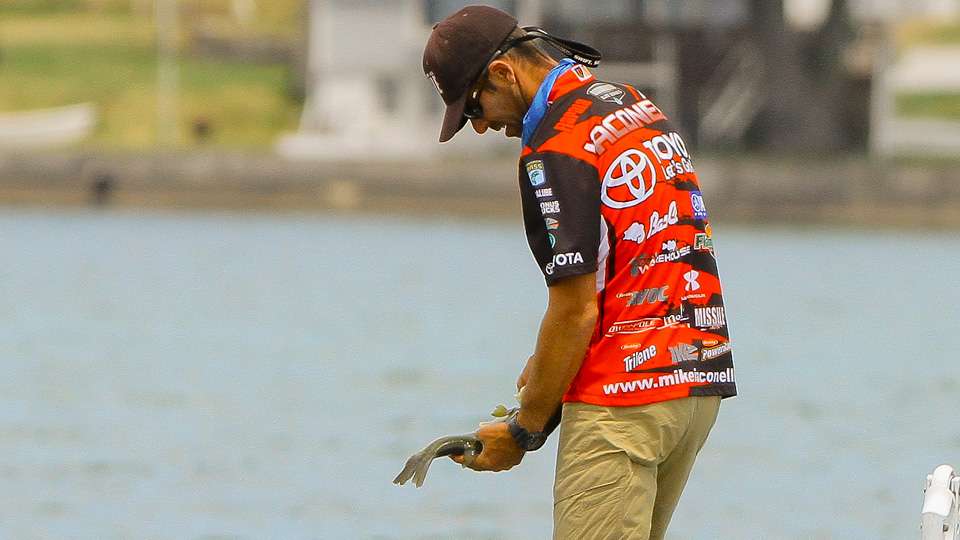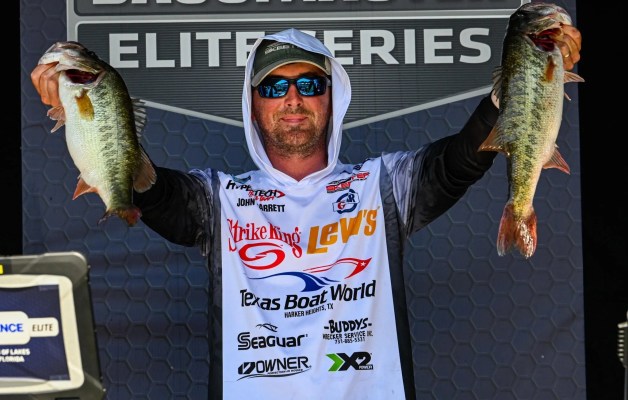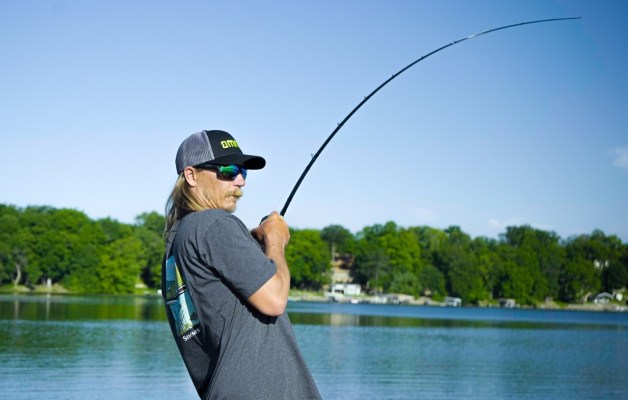
There are three basic ways to rig a plastic jerkbait. Which one you choose is mostly a matter of what’s happening with the bass and the general water and fishing conditions. Regardless of which one I select, however, I always throw these baits on spinning tackle. It makes for a better overall presentation.
Editor’s note: Read part 1.
The one I use the most is a common Texas rig. Last time we talked about how to make these baits run shallow or deep. Keep what I said in mind. We also talked about how I don’t like heavy, weighted hooks. That’s absolutely true, but there are exceptions. I never use a hook with a belly weight, but I do use heavy wire EWG models when I want to get a little more casting distance or presentation depth.
The real key to making this presentation work, however, is how you attach it on your line. I start with braid and a short – 8-16 inches – fluorocarbon leader. The braid gives me distance and the fluorocarbon gives me invisibility.
Here’s the thing, though. I put a big swivel in between my braid and my fluorocarbon. I don’t remember what number it is but it’s about a 1/4 inch long, and it’s always silver. The swivel helps with line twist, but more importantly it looks like a tiny minnow swimming in front of my lure.
That might sound a little crazy or too technical to some of you but believe me when I say I always do it. I’ve fished plastic jerkbaits with and without a swivel. With is better.
For my second option I put my jerkbait on a jig head. This rig is for deep, clear water applications. My preference is a darter style head in the 1/8- to 1/2-ounce weight range.
I fish my jig head rigs on straight fluorocarbon. I like the way it sinks and for some reason I get the feeling bass can sense the presence of braid. I know that goes against what a lot of anglers think, but it’s what I think so I go with it.
There’s nothing fancy or secret about the way I fish this one. I cast it out, let it fall and bring it back in a fast, erratic fashion. It’s twitch and fall all the way back to the boat.
My third rigging technique is a kind of finesse Carolina rig.
My line is typically braid with a long fluorocarbon leader. My weight is usually around a 1/4-ounce, but I will occasionally go as heavy as 3/8th of an ounce if the water’s dirty or if I want to make a lot of noise with the sinker just before my bait shows up.
The trick here is to use a thin wire EWG hook and work the bait so that it glides. Erratic action is not the thing. It’s about smooth and gentle. The easiest way to get that action is to pull from the side but put a slight shimmy in your rod tip as you do it.
Plastic jerkbaits will catch them all year, but they’ll be especially productive for the next couple of months. Throw a couple of packs in your boat the next time you go out.
Mike Iaconelli’s column appears weekly on Bassmaster.com. You can also find him on Facebookand Twitter or visit his website, mikeiaconelli.com.





